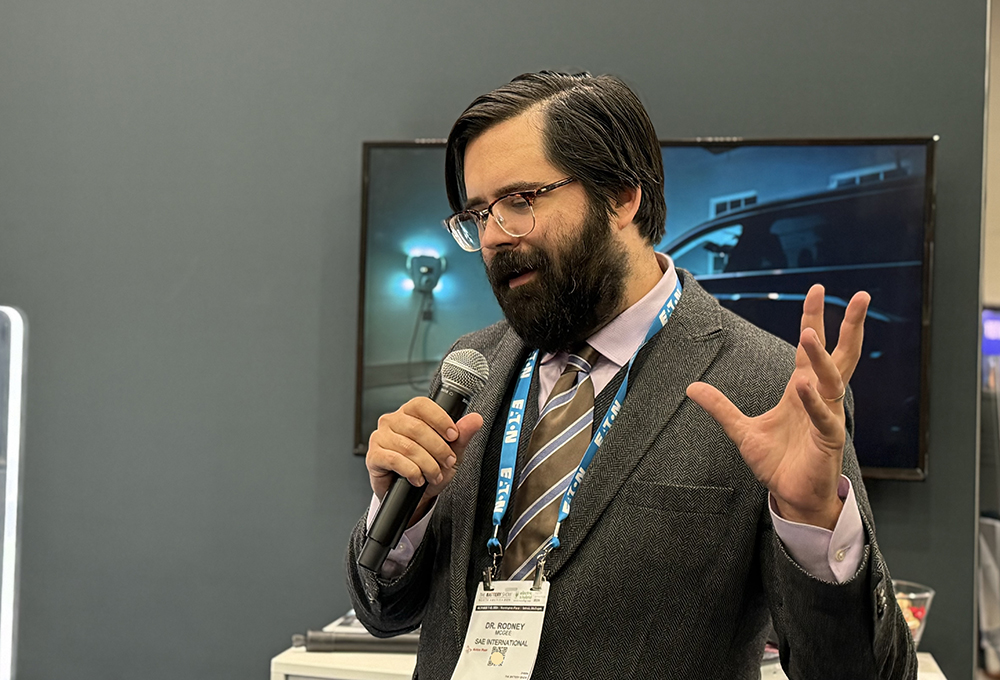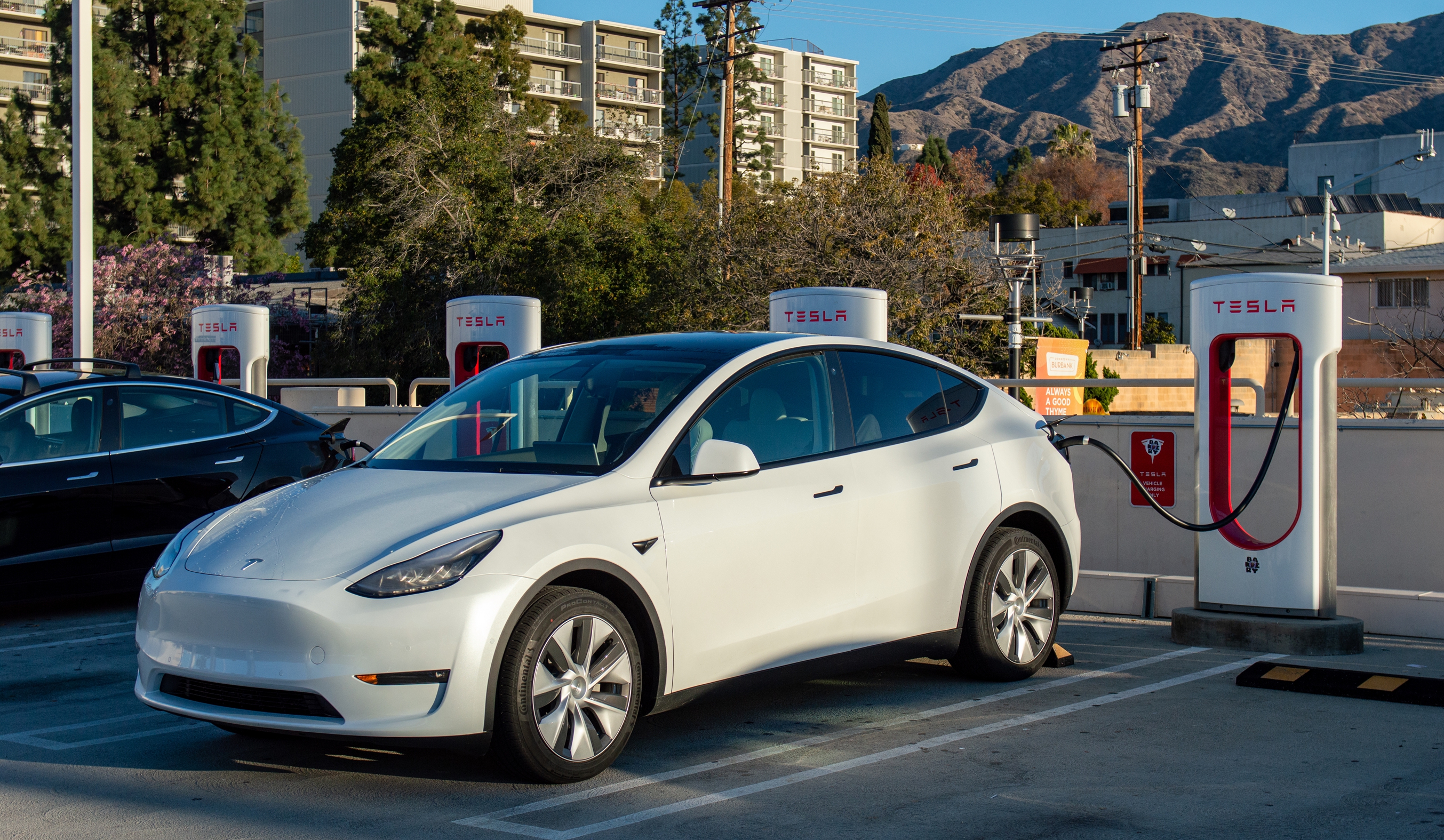 底特律2024年北美电池展上的SAE展位。(Chris Clonts)
底特律2024年北美电池展上的SAE展位。(Chris Clonts) Rodney McGee,NACS J3400 工作组主席、特拉华大学电气工程教授。(Sebastian Blanco)
Rodney McGee,NACS J3400 工作组主席、特拉华大学电气工程教授。(Sebastian Blanco)
SAE J3400 NACS工作组主席、特拉华大学交通电气化中心的研究工程师Rodney McGee指出,该文件的正式名称为《SAE J3400TM:NACS电动汽车耦合器技术推荐实践(Electric Vehicle Coupler Technical Recommended Practice)》,可被视为“构建产品的蓝图”。预计该文件发布后,供应商将推出一系列符合新规的新产品,并由OEM和第三方机构(如UL公司)进行测试。
McGee表示,J3400标准的制定吸纳了自上一次重要的北美电动车充电标准J1772发布以来出现的一些主流优秀理念(J1772标准于1996年发布,并于2009年被行业广泛采纳)。McGee指出,大规模推广NACS将有望改善北美充电基础设施,这主要有两大原因。首先,一旦大多数新生产的电动车能够使用特斯拉标准的充电网络充电,其他运营商将不得不提升其充电网络的便捷性和可靠性,以与特斯拉匹敌,否则他们会在用户充电体验的竞争中迅速败下阵来。第二,相较于其他OEM和供应商建设的充电网络,特斯拉充电网络更具优势,因为特斯拉工程师同时参与了电动车及其供电设备(EVSE)的开发。
在电压方面,升级版NACS将把特斯拉的部分前瞻性技术推广至更广泛的用户群体。McGee表示,特斯拉充电桩能将公用事业公司提供的480 V三相电转换为277 V商用单相电,从而直接为电动车充电。这样一来,就无需在路边额外安装变压器,从而降低交流充电成本并减少铜线和电缆的使用量。
Experts underscore that the standard is for a system of charging, not just a plug, and relay best practices.
The auto industry took the next step in the evolution of North American electric vehicle charging solutions today at The Battery Show in Detroit. That’s where SAE International released its NACS J3400 Recommended Practice document.
Technically called the “SAE J3400TM: NACS Electric Vehicle Coupler Technical Recommended Practice,” the RP can be considered a “blueprint to build” and should set off a stream of new products from suppliers that OEMs and third-party groups like UL will soon test, said Rodney McGee, chairman of the SAE J3400 NACS Task Force and a research engineer at the Transportation Electrification Center at the University of Delaware.
“There's going to be more interoperability testing, more work with the industry, as we look for opportunities for improvements in the document,” he said. “When we go from a recommended practice to a standard, we really want to see more of that happen. The ideal situation is that there are very few changes between the two.”
NACS is also getting an official name change with this next step. The acronym now stands for the “North American Charging System” (instead of “Standard” at the end) in order to “[reflect] that it is a system comprising a set of industry standards covering aspects beyond the vehicle coupler,” SAE said in its announcement.
McGee told SAE Media that the move to J3400 gave the industry the opportunity to incorporate good ideas that have been introduced or made popular since the development of the last major North American EV standard, J1772, which kicked off in 1996 and became broadly adopted by the industry in 2009. McGee said there are two main reasons why the upcoming massive shift to NACS should finally provide better charging infrastructure in North America. First, once most new EVs can charge at the gold-standard Tesla network, other operators will need to match Tesla in ease-of-use and reliability or they’ll lose the apples-to-apples comparisons that EV drivers will make in a way they couldn’t before. Second, the reason Tesla’s network has advantages over the OEM-and-supplier-built networks that non-Tesla drivers deal with is that Tesla engineers worked on both the vehicle and the EVSEs.
“When [Tesla] designed the basis of NACS over ten years ago, they were always focused on both sides,” McGee said. “They were a company building and operating a charging network and also building cars, and when you approach a system from that development, you end up maybe in a different place than when J1772 was started, when OEMs did not have these energy units and these huge investments in infrastructure. Now, they're on both sides of the equation and so the system design of NACS really is about mass electrification: having a connector that can support more voltage types for AC charging and more connection methods. We really brought in a lot of that stuff to be THE standard to electrify transportation in North America, especially for passenger cars.”
Compared to J1772, for example, J3400 will allow for digital communication between the car and the charger (J1772 uses what McGee called a “very dumb analog communication method”) and the task force hopes to bring features like minimum required error codes that the ChargeX consortium uses with DC fast charging to the new AC J3400 standard. J3400 also adopts V2G and backup power requirements.
J3400 will also update the North American charging landscape to allow for carry-along cord sets, McGee said. Common in the rest of the world, personal cords allow for smaller, cheaper EVSEs because the stations offer a standard port instead of a cable and plug that requires more investment and maintenance. This will help bring EV charging infrastructure to lower-income drivers and people who live in apartments.
“The stuff that hangs around when there's no electric car there needs to be minimized,” McGee said. “It needs to disappear into the infrastructure. And that'll really drive curbside charging.”
The J3400 RP currently says the maximum amperage for the standard would be 900 amps if it's just cooling from the connector side and 1000 amps if cooling from both the vehicle inlet side and the connector side. “[That] is just theoretical,” McGee said, since no automaker has announced anything that powerful. “But in theory, NACS tops off at exactly one megawatt.”
On the voltage side, the updated NACS will bring some of Tesla’s far-sightedness to the broader public. Tesla chargers are able to use the 480-volt, three-phase power that comes from utilities to a commercial site as single-place power at 277 volts and put that into the vehicle directly, McGee said. That will mean cheaper AC charging because you don’t need to have to pay for an extra transformer right there on the curb. Using less copper and a smaller conduit are other benefits.
等级
打分
- 2分
- 4分
- 6分
- 8分
- 10分
平均分
